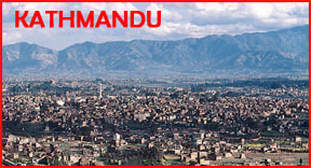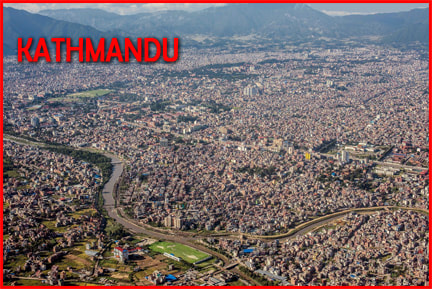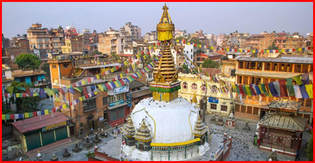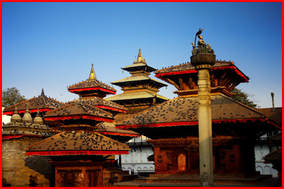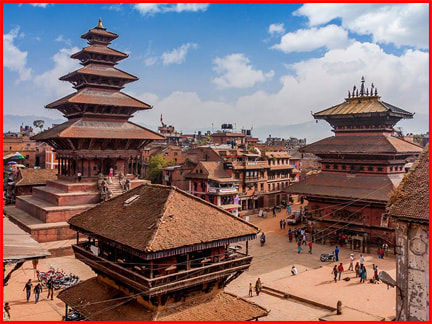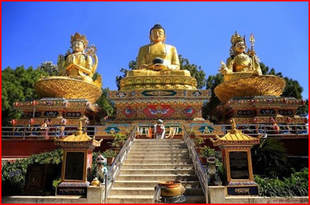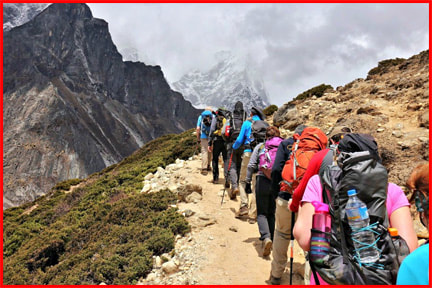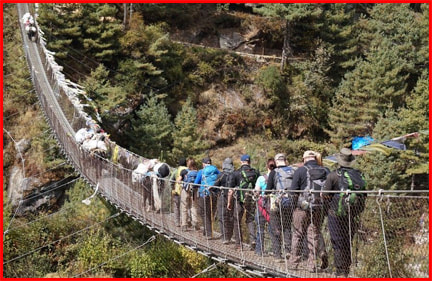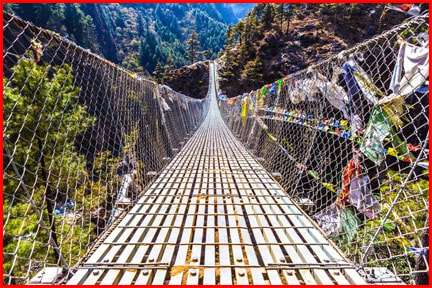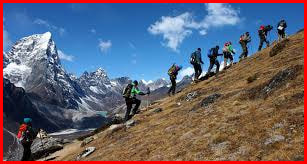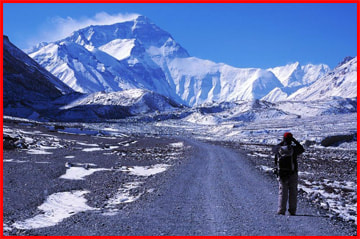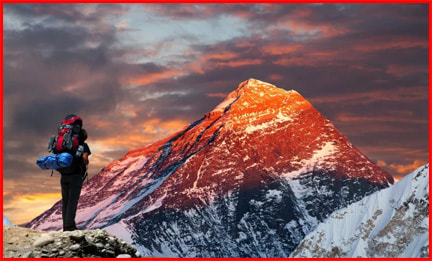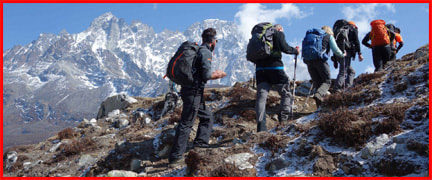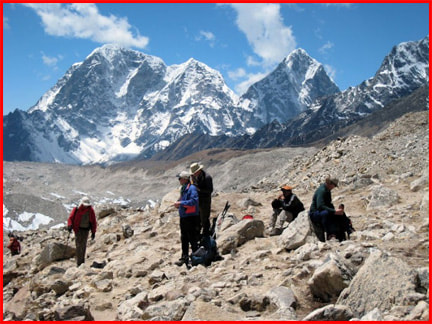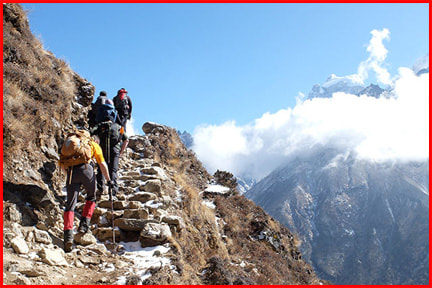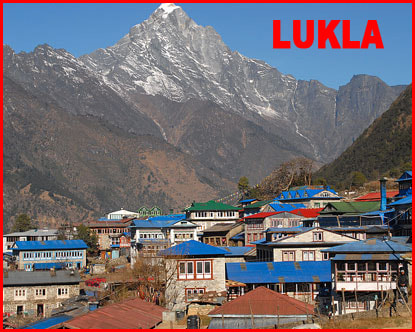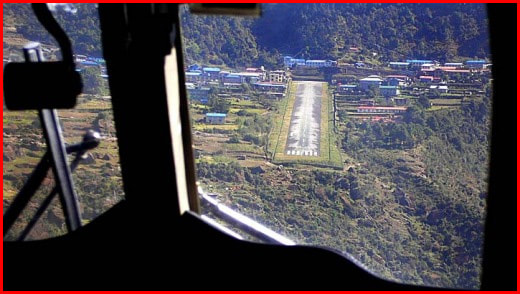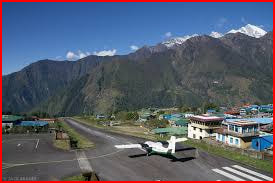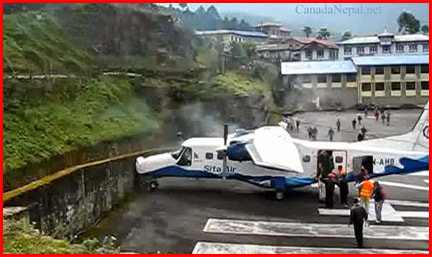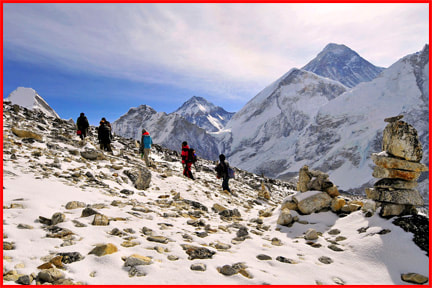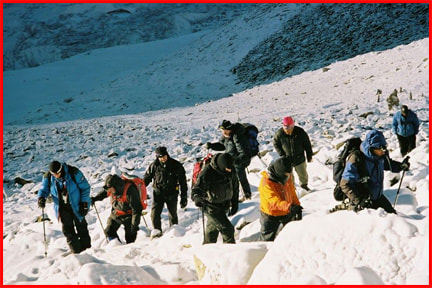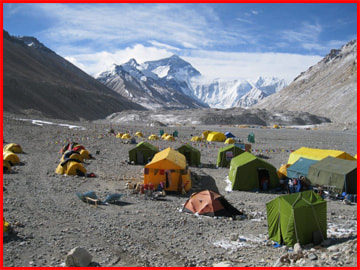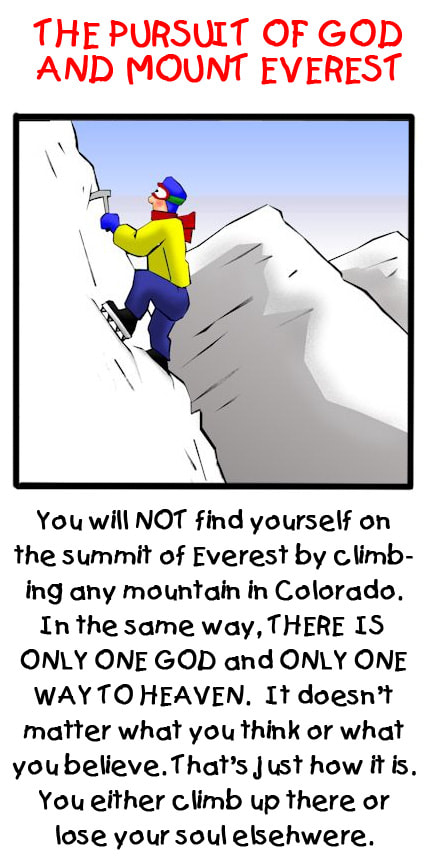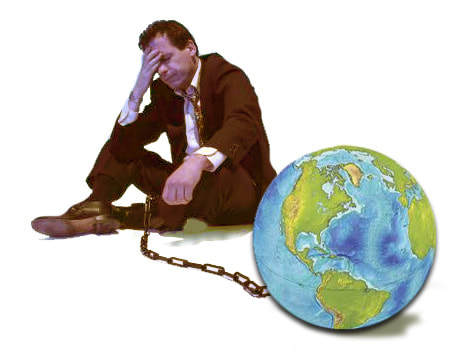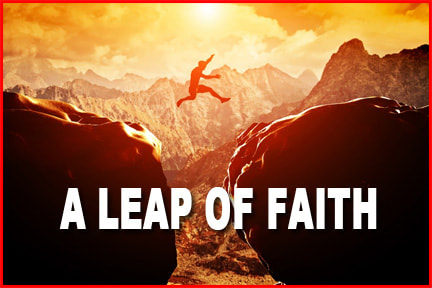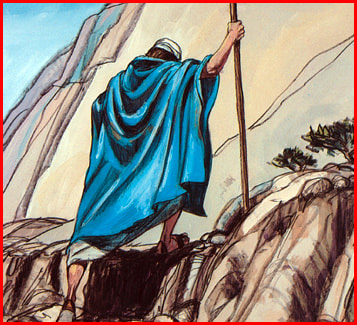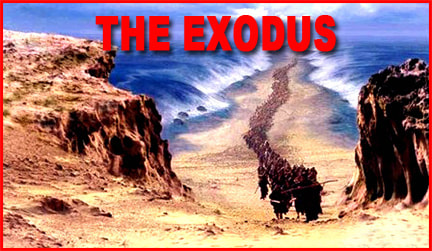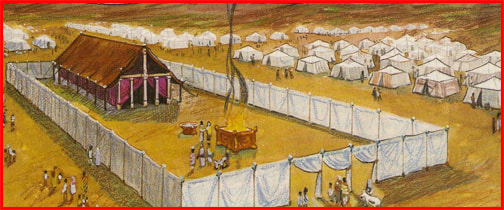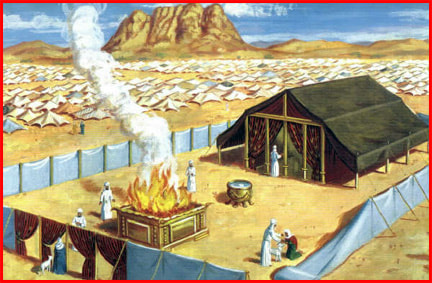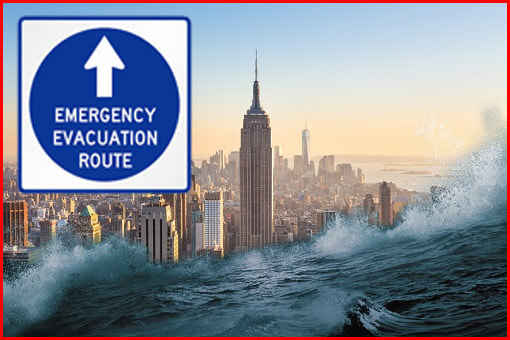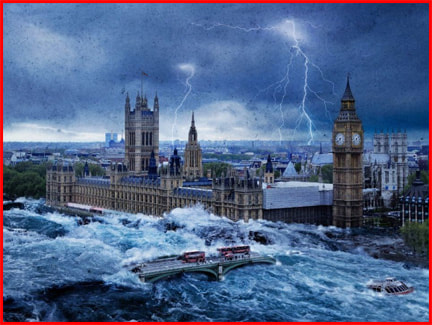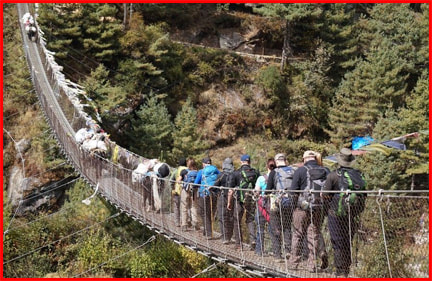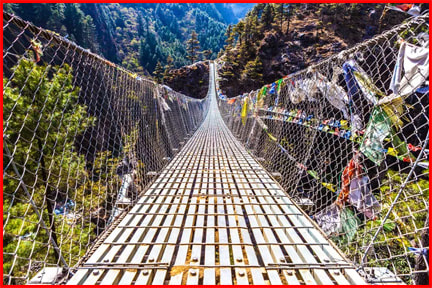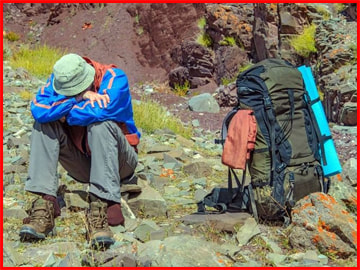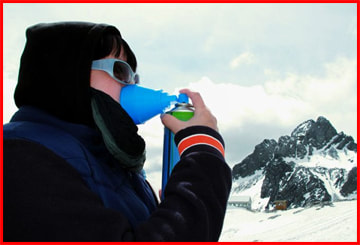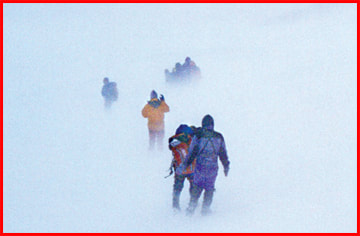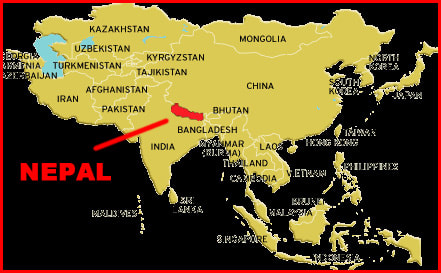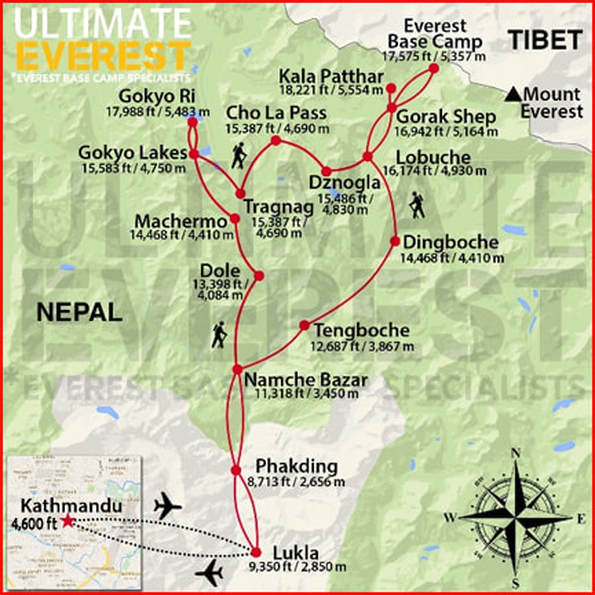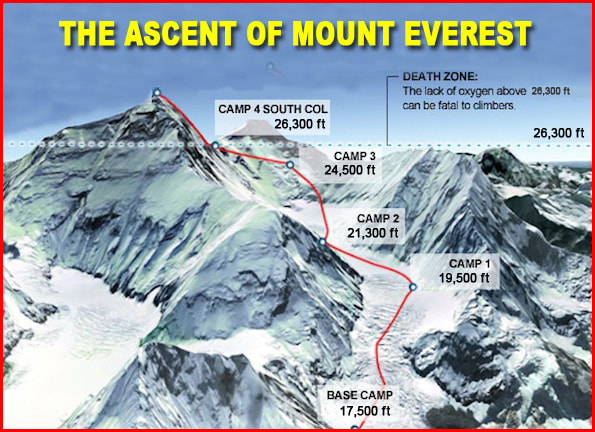| Devotion to Our Lady |
|
- Homepage
-
Daily Thoughts
- 2023 October Daily Thoughts
- Daily Thoughts Lent 2020
- Daily Thoughts for Advent 2019
- Daily Thoughts for October 2019
- Daily Thoughts for September 2019
- Daily Thoughts for August 2019
- Daily Thoughts for July
- Daily Thoughts for June
- Daily Thoughts for Easter 2019
- Daily Thoughts for Lent 2019
- Daily Thoughts for Christmas
- Daily Thoughts Easter 2022
- Sacred Heart
- Holy Ghost
-
Spiritual Life
- Holy Mass Explained
- First Friday Devotions
- First Saturday Devotions
- The Mercy of God
- Vocations
- The Path Everyone Must Walk >
- Gift of Failure
- Halloween or Hell-O-Ween?
- Ignatian Spiritual Exercises >
- Meditation is Soul-Saving
- Spiritual Communion
- Miraculous Medal
- Enrollment in Miraculous Medal
- St. Benedict Medal
- Holy Water
- Advice on Prayer
- Your Daily Mary
-
Prayers
- September Devotions
- Seven Sorrows of Our Lady
-
Novenas
>
- NV-Help of Christians
- NV-Nativity of Our Lady
- NV-Seven Sorrows
- NV- Sorrowful Heart
- NV-Pope St Pius X
- NV-La Salette
- NV-St Michael Archangel
- NV-Immaculate Heart
- NV-Assumption
- NV-Novena for Fathers
- NV-Novena for Your Mother
- NV-St Raphael Archangel
- NV-Souls in Purgatory
- NV-All Saints Day
- NV-Christ the King
- NV-Divine Motherhood
- NV-Guardian Angels
- NV-Rosary
- NV-Mirac Med
- NV- Imm Conc
- NV - Guadalupe
- NV - Nativity of Jesus
- NV-Epiphany
- NV-OL Good Success
- NV-Lourdes
- NV-St Patrick
- NV-St Joseph
- NV-Annunciation
- NV-St Louis de Montfort
- NV-OL Good Counsel
- NV-Last Supper
- NV-Passion
- NV-Pentecost
- NV-Ascension
- NV-Sacred Heart
- NV-Sacred Heart & Perpetual Help
- NV-Corpus Christi
- NV-OL of Perpetual Help
- NV-Queenship BVM
- NV-OL of Mount Carmel
- NV-St Mary Magdalen
- NV- Im Hrt
- August Devotions to IHM
- Immaculate Heart of Mary
- Litany of Dependence
- Prayers to St Mary Magdalen
- Prayers in Times of Sickness Disease & Danger
- Holy Souls in Purgatory
- Meditations on the Litany of Our Lady
- Special Feast Days
- Prayers to Mary (Mon-Sun)
- Litanies to Our Lady >
- Various & Special Needs
- Our Lady of the Rosary
- Our Lady of Mt. Carmel
- Our Lady of Perpetual Help
- Our Lady of Guadalupe
- Other titles of Our Lady
-
Rosary
- Downloads
- Consecration
- Easter Season
-
Holy Week
- Last Seven Words of Jesus >
- Characters of Passion >
- The Last Days of Christ
- Before Palm Sunday
- Palm Sunday
- Monday in Holy Week
- Tuesday in Holy Week
- Wednesday in Holy Week
- Holy Thursday (Last Supper)
- Holy Thursday (Agony & Arrest)
- Night Vigil with Christ
- Good Friday (Pilate & Herod)
- Good Friday (Way of Cross & Crucifixion)
- Saturday in Holy Week
-
Lent
- Ideas for Lent
- Daily Lenten Planner
- Daily Lenten Liturgy
- From Cold to Hot
- Lent with Aquinas
- Lent with Dom Gueranger
- Virtues for Lent
- History of Penance
- How Expensive is Sin?
- Confession of Sins
- Letter to Friends of the Cross
- Sermons for Lent
- Stations of the Cross >
- Lenten Prayers
- 7 Penitential Psalms
- Lenten Psalms SUN
- Lenten Psalms MON
- Lenten Psalms TUE
- Lenten Psalms WED
- Lenten Psalms THU
- Lenten Psalms FRI
- Lenten Psalms SAT
- Lenten Laughs
- Septuagesima
-
Christmas
- Epiphany Explained
- Suggestions for Christmas
- Food For Thought
- Christmas with Aquinas
- Christmas with Dom Gueranger
- Christmas Prayers
- Candles & Candlemas
- Christmas Sermons
- Christmas Prayers SUN
- Christmas Prayers MON
- Christmas Prayers TUE
- Christmas Prayers WED
- Christmas Prayers THU
- Christmas Prayers FRI
- Christmas Prayers SAT
- Twelve Days of Christmas >
-
Advent Journey
- Purgatory
- Christ the King
- Legion of Mary
- Scapular
-
Saints
-
Martyrs for the Faith
>
- Your Daily Martyr >
- All 365 Days of Martyrs
- Cristeros
- St Valentine & Valentine's Day
- Martyrs--Thomas Becket
- Martyrs--John the Apostle
- Holy Machabees
- Age of Martyrdom
- Carmelites of Compiegne
- Martyrs--Peter & Paul
- Martyrs--John the Baptist
- Martyrs--Andrew
- Martyrs--James the Great
- Martyrs--North American
- Martyrs--Seven Holy Sleepers
- Martyrs--Afra
- School of Martyrdom
- Martyrs--Christina
- Desert Saints >
- Saints for Sinners >
- Saints of Mary >
- History of All Saints Day
-
Martyrs for the Faith
>
- Precious Blood
- Synod 2023
-
Catechism
- Catechism Lesson 1
- Catechism Lesson 2
- Catechism Lesson 3
- Catechism Lesson 4
- Catechism Lesson 5
- Catechism Lesson 6
- Catechism Lesson 7
- Catechism Lesson 8
- Catechism Lesson 9
- Catechism Lesson 10
- Catechism Lesson 11
- Catechism Lesson 12
- Catechism Lesson 13
- Catechism Lesson 14
- Catechism Lesson 15
- Catechism Lesson 16
- Catechism Lesson 17
- Catechism Lesson 18
- Catechism Lesson 19
- Catechism Lesson 20
- Catechism Lesson 21
- Catechism Lesson 22
- Bible Study
-
Calendar
- Miracles
- Apparitions
- Shrines
- Prophecies
- Angels Homepage
- Hell
-
Church Crisis
- Conspiracy Theories
- Amazon Synod 2019 >
- Liberalism & Modernism
- Modernism--Encyclical Pascendi
- Modernism & Children
- Modernism--Documents
- The Francis Pages
- Church Enemies on Francis
- Francis Quotes
- Amoris Laetitia Critique
- Danger of Ignorance (Pius X)
- Restore all In Christ (Pius X)
- Catholic Action (Pius X)
- Another TITANIC Disaster?
- The "Errors of Russia"
- CRISIS PRAYERS
- Election Novena 2024
- The Anger Room
- War Zone
- Life of Mary
- Spiritual Gym
- Stupidity
- Coronavirus and Catholicism
- History & Facts
- Books
- Catholic Family
- Children
- Daily Quiz
-
Novena Church & Pope
- Day 01 Church-Pope Novena
- Day 02 Church-Pope Novena
- Day 03 Church-Pope Novena
- Day 04 Church-Pope Novena
- Day 05 Church-Pope Novena
- Day 06 Church-Pope Novena
- Day 07 Church-Pope Novena
- Day 08 Church-Pope Novena
- Day 09 Church-Pope Novena
- Day 10 Church-Pope Novena
- Day 11 Church-Pope Novena
- Day 12 Church-Pope Novena
- Day 13 Church-Pope Novena
- Day 14 Church-Pope Novena
- Day 15 Church-Pope Novena
- Day 16 Church-Pope Novena
- Day 17 Church-Pope Novena
- Day 18 Church-Pope Novena
- Day 19 Church-Pope Novena
- Day 20 Church-Pope Novena
- Day 21 Church-Pope Novena
- Day 22 Church-Pope Novena
- Day 23 Church-Pope Novena
- Day 24 Church-Pope Novena
- Day 25 Church-Pope Novena
- Day 26 Church-Pope Novena
- Day 27 Church-Pope Novena
- Day 28 Church-Pope Novena
- Day 29 Church-Pope Novena
- Day 30 Church-Pope Novena
- Day 31 Church-Pope Novena
- Day 32 Church-Pope Novena
- Day 33 Church-Pope Novena
- Day 34 Church-Pope Novena
- Day 35 Church-Pope Novena
- Day 36 Church-Pope Novena
- Day 37 Church-Pope Novena
- Day 38 Church-Pope Novena
- Day 39 Church-Pope Novena
- Day 40 Church-Pope Novena
- Day 41 Church-Pope Novena
- Day 42 Church-Pope Novena
- Day 43 Church-Pope Novena
- Day 44 Church-Pope Novena
- Day 45 Church-Pope Novena
- Day 46 Church-Pope Novena
- Day 47 Church-Pope Novena
- Day 48 Church-Pope Novena
- Day 49 Church-Pope Novena
- Day 50 Church-Pope Novena
- Day 51 Church-Pope Novena
- Day 52 Church-Pope Novena
- Day 53 Church-Pope Novena
- Day 54 Church-Pope Novena
- Penance Novena
- Daily WeAtheR Forecast
LINKS FOR ARTICLES IN "THE NARROW PATH TO HEAVEN" SERIES
Preface: Introduction to the Mountain
1. Setting-Up Base Camp
2. To Go Further, or To Go Back Down?
3. The Real Climb Begins
Preface: Introduction to the Mountain
1. Setting-Up Base Camp
2. To Go Further, or To Go Back Down?
3. The Real Climb Begins
PART 1 : SETTING-UP "BASE-CAMP" FOR OUR CLIMB TO HEAVEN
|
|
The Lay of the Land and the Height of the Climb
Where on Earth is Everest? Nepal, a tiny land-locked Himalayan country, about the size of England or the state of Idaho, is home to 10 of the world’s highest peaks ― including Mt. Everest, and offers some of the most dramatic mountain scenery in the world. The capital of Nepal is Kathmandu. Kathmandu is also the largest metropolis in the Himalayan hill region, with a population of 1.4 million in the city proper, and 2.5 million in its urban agglomeration stretching across the Kathmandu Valley. Kathmandu a Starting Point
Kathmandu stands in the bowl-shaped Kathmandu Valley of central in the Himalayan foothills. The city is in an ancient lake basin, with fertile soil and flat terrain. This geography helped form a society based on agriculture. Kathmandu is the most important industrial and commercial center in Nepal. Tourism is an important part of the economy in Nepal, as Kathmandu is the gateway to the Nepalese Himalayas. In recent years, Kathmandu was ranked third among the top ten upcoming travel destinations in the world, and ranked first in Asia. Tourism is a major source of income for most of the people in the city. The city was the royal capital of the Kingdom of Nepal and hosts palaces, mansions and gardens of the Nepalese aristocracy. Kathmandu has been the center of Nepal's history, art, culture and economy. It has a multiethnic population within a Hindu and Buddhist majority. Pagan religious and cultural festivities form a major part of the lives of people residing in Kathmandu. There are also seven casinos in the city. The City and the Mountain All of this makes the city of Kathmandu a perfect symbol of the world and worldliness. To reach Mount Everest—and likewise the mountain of Heaven—you have to exit the city and leave all that luxury behind in order to climb the mountain and reach its summit. You cannot make the city (the world) your ‘Base Camp’ in your quest for Heaven. The city and the mountain are diametrically opposed—they are as different as night and day in all respects—which brings to mind the words of Holy Scripture: “My thoughts are not your thoughts: nor your ways My ways, saith the Lord. For as the heavens [we could also say mountains] are exalted above the Earth, so are my ways exalted above your ways, and my thoughts above your thoughts” (Isaias 55:8-9). “Lay not up to yourselves treasures on Earth, but lay up to yourselves treasures in Heaven. For where thy treasure is, there is thy heart also. No man can serve two masters. For either he will hate the one, and love the other: or he will sustain the one, and despise the other. You cannot serve God and mammon!“ (Matthew 6:19-24). The World and Heaven Kathmandu is a symbol of the Earth with all its attractions, entertainment and riches. Mount Everest is a symbol of God and Heaven. God calls everyone out of ‘Kathmandu’ to go and climb to Him on ‘Mount Everest’, but few there are who hear His call and consequently “many are called, but few chosen” (Matthew 20:16). They prefer the luxury, comfort, pleasures, riches and wealth of living in an opulent city, and turn their backs on the call to carry their cross up the mountain. “And behold one came and said to Jesus: ‘Good master, what good shall I do that I may have life everlasting?’ … Jesus said to him: ‘If thou wilt be perfect, go sell what thou hast, and give to the poor, and thou shalt have treasure in Heaven: and come follow Me!’ When the young man had heard this word, he went away sad: for he had great possessions. Then Jesus said to His disciples: ‘Amen, I say to you, that a rich man shall hardly enter into the Kingdom of Heaven. And again I say to you: It is easier for a camel to pass through the eye of a needle, than for a rich man to enter into the Kingdom of Heaven!’ And when they had heard this, the disciples wondered very much, saying: ‘Who then can be saved?’ And Jesus beholding, said to them: ‘With men this is impossible: but with God all things are possible!’” (Matthew 19:16-26). “And Jesus said to all: ‘If any man will come after Me, let him deny himself, and take up his cross daily, and follow Me!’” (Luke 9:23). Tour Guide Warning Here is what one of the many Tour Guide companies, that cater to persons wishing to make the trek to Mount Everest Base Camp, has to say about the matter: “Whilst some individuals seek to summit the greatest mountain on earth, it is enough for most mere mortals to simply stand at the base and experience the awesome stature of Everest from below. However, there are no roads into Everest Base Camp and every person seeking to view the incredible mountain up close will need to trek through the Khumbu Valley from Lukla to Base Camp and back again - unless, of course, you can afford a helicopter!. The journey usually takes several weeks and can sometimes seem a little daunting to a novice hiker. But don't panic, it's very achievable! “The first thing to make clear is that the Everest Base Camp trek requires no technical climbing and is essentially a long hike. We therefore strongly believe that anyone with determination and a basic fitness level can trek the route - and all of our successful clients attest to this!. We have seen overweight, underweight, old and young do this trek and all of them enjoyed it thoroughly. That being said, there are a number of crucial factors to consider prior to trekking the route such as length, altitude and training that will help you determine whether you think the Everest Base Camp route is the right trek for you . “After a fairly nerve racking flight into Lukla, your 40 mile trek to Everest Base Camp will begin (80 mile round-trip). Depending on who you are and how experienced a trekker you are, 40 miles may or may not sound like a long distance. In reality, even for a novice trekker, 40 miles is not particularly far when you think that the average walking speed of an individual is 3 miles per hour. The walking is made even easier when you consider that your larger bags will be carried by porters. “On our 14 day return package to Everest Base Camp, you will be walking for 9 of these days with an average of 9 miles a day. Although this does not sound very long, the terrain can often be steep, rocky, slow going and, depending on the season, icy and snowy. It is important to remember that this is a wilderness trek and at no point is the path paved. As with most paths in the Himalayas, the trek is very up and down and you will need to make sure you stop and rest often to prevent over-tiredness. “Altitude is the most difficult aspect of the trek and what makes the relatively easy length of the trek seem quite far. Acute Mountain Sickness (AMS) is a serious condition that should not be underestimated or taken lightly by anyone, especially when trekking a route of this altitude. “Starting at 9,400 feet above sea level at Lukla, the trek steadily winds its way upwards to Everest Base Camp at 5,364 metres. At 9,400 feet, Lukla is already very high and you will need to take the trek slowly if you are to reach Base Camp safely. The highest point of the trek is at Kala Pathar on the return section ― a beautiful view point at 18,200 feet. Our itinerary offers two acclimatization days during the trek which we feel is very important for the welfare and comfort of our clients. We take 9 days on our outward journey and 3 on the return journey. This is to help acclimatization as you ascend to higher altitudes. “It is very important that you seek medical advice prior to trekking at these altitudes and research altitude sickness to make yourself aware of the symptoms and treatments available. Please also note that there is no correlation between fitness, age or gender and altitude sickness ― everyone is at risk. “One thing you can’t train for is altitude and that can prevent people reaching base camp where there is 50% less oxygen compared to sea level. The secret is to acclimatize well and to do so you need to take a slow pace, a good itinerary, ascend to altitude slowly, rest, eat good food, sleep well and drink plenty of fluid. The actual distances from Lukla to Everest Base Camp can be covered far quicker than we do it, but that will make you ill. “You certainly don't need to be an Olympic athlete in peak shape or be a young individual to accomplish this trek - although being in great shape is certainly a bonus! Although it's a hilly trek at high altitude, our belief is that with some basic training, any weekend walker can tackle the Everest Base Camp Trek. “Some days will be easier than others but you need to be prepared for the tough ones and this means setting yourself a training plan at least 6 weeks prior to your trek. A 6 hour trek in the mountains will take it out of you physically if you are unfit and building your strength up prior to leaving will make the trek far more enjoyable. “We always recommend to our clients to build a training plan that encompasses several long walks a week (preferably carrying a heavy load), strength training at the gym (particularly your legs) and some form of aerobic exercise like jogging or swimming to build up your long distance fitness.” Merely Getting to Base-Camp Requires a Lot of Effort Everest’s daunting summit soars so high (29,035 feet) that trekking to its base camp (17,600 feet) is still an adventure of the highest sort. To merely reach the Base-Camp of Mount Everest, necessitates a difficult trek from Kathmandu. Base Camp is not a “hop-skip-and-a-jump” away. Kathmandu is at an approximate altitude of 4,600 feet above sea level and the flight to Lukla will take you up to a height of 9,400 feet. With Everest Base Camp standing at 17,600 feet, the base camp trek means taking a trek that climbs a total of 8,200 feet to the Base Camp from the airport in Lukla and climbs 13,000 feet to Base Camp from Kathmandu. The Everest Base Camp trek on the south side is one of the most popular trekking routes in the Himalayas and is visited by thousands of trekkers each year. Trekkers usually fly from Kathmandu to Lukla to save time and energy before beginning the morning trek to this base camp. However, trekking to Lukla is possible. There are no roads from Kathmandu to Lukla and as a result, the only method of transporting large and heavy goods is by plane. In 2015, it was noted that about 40,000 people per year take the trek from the Lukla airport to the Nepal Everest Base Camp. The town of Lukla is a massive step down in size and standards from the opulence, wealth, facilities and extravagance of the capital city of Kathmandu. You could compare it to the difference of Our Lord's little town of Nazareth and the massive Jerusalem. It is a general trend of the spiritual life for God to separate us more and more from the luxuries, pleasures, comfort, wealth, possessions and amenities of this life, as we draw closer and closer to Him,. This is clearly seen and experienced by all those who seek to approach Mount Everest. The closer you get, the less comfortable things become. Lukla Airport is renowned as being one of the most dangerous, if not the most dangerous, airport in the world. The 35 minute flight from Kathmandu to Lukla can be a scary ride, much like the flight to Heaven! Most people think the scary thing about Lukla is the length of the runway, which slopes steeply upwards to assist planes that have just landed to slow down before they crash into the wall at the far end. All around are huge mountains. Once the pilot commits to landing there’s no space to maneuver so if anything goes wrong he has zero chance of pulling up. It’s land it, or crash it. And the fact the runway is perched hundreds of yards above the valley floor, has given rise to the legend that planes don’t even have to take off properly, because they can simply fall off the end of the runway into the valley and still have plenty of time to rise back up again.Another dangerous factor is the fact that pilots have to approach the runway using eyesight alone. In October 2008, three Twin Otter airplanes were landing in quick succession, which is standard practice at Lukla Airport, where the planes can turn around and be off again very quickly. The first two landed safely, but just as the third was approaching the airstrip a cloud swept in front of the pilot’s vision causing him to misjudge the landing slightly and catch one of the wings of the plane in a wire fence to the side of the runway. The plane burst into flames, killing everyone on board except the pilot, who was the only one able to escape from the fireball. Due to the short and narrow runway, the planes that fly into Lukla are small planes. These small planes are easy prey to the turbulent and vicious winds that are very frequently experienced. The little planes are thrown around and buffeted like leaves. This brings to mind the spiritual life and the buffeting and storms that we have to experience in our voyage to Heaven. Like the Apostles, we will be tempted, many a time, to scream out: "Lord! Save us! We perish!" When flights are so unreliable and nail biting you might imagine that there is some alternative that more nervous trekkers would prefer. There is one. Instead of a 35 minute flight, you’re looking at a ten hour bus ride from Kathmandu to the trail-head at Jiri, followed by a 6 to 8 day trek from Jiri to Lukla, depending on how long you want to give yourself to acclimatize in the ever-climbing altitude. After that, you have will have an additional a forty-mile trek from Lukla to Everest Base Camp that can take a further 9 to 12 days over an increasingly uncomfortable and challenging mountain foothill terrain—far from the comfortable city all its comfortable amenities. This is very typical of the spiritual life—if we want to draw closer to God, we have to go out of our worldly comfort zone and face the tough terrain that leads to the Mountain of God. There can be no “armchair” spirituality where we merely “click on the remote control” and surf the spiritual life in our imagination. It is not about “talking the talk” but more about “walking the walk.” Forty Miles of Uphill Walking From Lukla to Everest Base Camp The spiritual life is the hardest life of all. St. Thomas Aquinas says that there are three kinds of work—physical work, intellectual work and spiritual work. He says that physical work is the easiest form of work. The next hardest is intellectual work. The hardest of all is spiritual work. With physical work, we are surrounded by things we can see, touch, feel, smell and taste—these are the things that we are most familiar with and can handle the best. With intellectual work, many of these tangible things fall by the wayside and we are left with intangible or abstract thoughts, ideas, concepts, theories, theorems, etc.—we enter a more invisible zone, but nevertheless a zone that we can somewhat grasp and understand and a zone that works according to rules that we understand. However, with spiritual work, we enter an even higher zone and less understandable zone, where we feel ever more out of our depth than in the abstract intellectual zone. This is the supernatural zone of the ways of God, of which God Himself says to us: “My thoughts are not your thoughts: nor your ways My ways, saith the Lord. For as the heavens are exalted above the earth, so are My ways exalted above your ways, and My thoughts above your thoughts!” (Isaias 55:8-9). “Who can search out His ways?” (Job 36:23) … “Who is wise, and he shall understand these things? For the ways of the Lord are right, and the just shall walk in them: but the transgressors shall fall in them” (Osee 14:10). Walking the ways of the Lord means walking up an ever-increasing gradient that eventually becomes a steep cliff-face on the Mountain of God. It is walking against the wind, or swimming against the tide, or going against the grain of worldly attitudes, fashions and maxims—not just for a day, but day after day, year after year. The distance from Lukla to Everest Base Camp reminds of us of Lent! The total distance covered on the trek from Lukla to the Everest Base Camp trek is approximately 40 miles over rough terrain (40 days of Lent). Beginners usually put themselves under the wings of a tour company, which has a sedate and lengthy trek, with walking days ranging from only 5 to 10 miles a day, with a few rest days thrown-in for acclimatization, thus taking anywhere from 9 to 12 days to reach Everest Base Camp. At the start of the trek the distances are short but there are hills aplenty, and higher the distances increase but the gradient is more consistent and even. The air has less oxygen at such altitudes, so the more time you give your body to adjust to the change in altitude (oxygen levels) on the ascent, the better chance you have of realizing your goal. The Everest Base Camp trek is a feasible goal for most fit hill walkers. The paths are well trodden, they are the rough and ready highways and byways of the local Sherpa people, even though they be very uncomfortable for those who love comfort and ease. Likewise, the paths of the spiritual life are also well trodden, they are the rough and ready highways and byways of the Saints, even though those paths may be uncomfortable and unpalatable for those who love the comfort and ease of the world. “And Jesus said to all: ‘If any man will come after Me, let him deny himself, and take up his cross daily, and follow Me!’” (Luke 9:23). Beginners, But Not Climbers
Let us remember that those who undertake and complete the trek from Lukla to the Mount Everest Base Camp are merely hikers and not mountain climbers. They make a difficult hike or trek to Mount Everest—but then they stop there. They see the summit, admire it, take photos of it—but then they turn back without going any further and without taking-on the real work of climbing and not just hiking. You could say that such folk—even though they have completed a difficult trek or hike—are merely tourists, who want to see the mountain, but not conquer it. These are like Catholics who, even though can see where they have to go (Heaven), do not want to exert themselves beyond the little difficulties that they no doubt endure in their daily lukewarm Catholic life. They are barely beginners in the spiritual life, who though they try to avoid mortal sin, have made a fatal peace with venial sin and do not want to relinquish it. The One Thing Necessary—To Climb the Mountain of God
Confronted by St. Martha—who was too busy with things around the house, and complained about her sister Mary doing nothing to help her but sitting at the feet of Our Lord (base camp) listening to His teaching—Our Lord says to her: “Martha! Martha! Thou art careful, and art troubled about many things! But one thing is necessary. Mary hath chosen the best part, which shall not be taken away from her!” (Luke 10:41-42). Mary had made her “Base Camp” at the feet of Our Lord and was not too concerned with the material needs that surrounded her—she was detached from them and attached to Our Lord. Fr. Garrigou-Lagrange, commentating upon this passage, writes: “The interior life is for all the ‘one thing necessary’. It ought to be constantly developing in our souls; more so than what we call our intellectual life, more so than our scientific, artistic or literary life. The interior life thus conceived is something far more profound and more necessary in us than intellectual life or the cultivation of the sciences, than artistic or literary life, than social or political life. Unfortunately, some great scholars, mathematicians, physicists, and astronomers have no interior life, so to speak, but devote themselves to the study of their science as if God did not exist. In their moments of solitude they have no intimate conversation with Him. Their life appears to be in certain respects the search for the true and the good, in a more or less definite and restricted domain, but it is so tainted with self-love and intellectual pride that we may legitimately question whether it will bear fruit for eternity. Many artists, literary men, and statesmen never rise above this level of purely human activity which is, in short, quite exterior. Do the depths of their souls live by God? It would seem not. This shows that the interior life, or the life of the soul with God, well deserves to be called the one thing necessary, since by it we tend to our last end and assure our salvation. This last must not be too widely separated from progressive sanctification, for it is the very way of salvation. “There are those who seem to think that it is sufficient to be saved and that it is not necessary to be a saint [thinking it is not necessary to climb the mountain]. It is clearly not necessary to be a saint who performs miracles and whose sanctity is officially recognized by the Church. To be saved, we must take the way of salvation, which is identical with that of sanctity [which means climbing to the summit of the mountain]. There will be only saints in heaven, whether they enter there immediately after death or after purification in Purgatory. No one enters Heaven unless he has that sanctity which consists in perfect purity of soul [which is reaching the summit of the mountain]. Every sin though it should be venial, must be effaced, and the punishment due to sin must be borne or remitted, in order that a soul may enjoy forever the vision of God, see Him as He sees Himself, and love Him as He loves Himself. Should a soul enter Heaven before the total remission of its sins, it could not remain there and it would cast itself into Purgatory to be purified [he would throw himself off the summit of the mountain]. The interior life of a just man―who tends toward God and who already lives by Him―is indeed the one thing necessary. To be a saint [to climb to the summit of the mountain], neither intellectual culture nor great exterior activity is a requisite; it suffices that we live profoundly by God” (Fr. Garrigou-Lagrange, The Three Ages of the Interior Life). “The pressing need of devoting ourselves to the consideration of the ‘one thing necessary’ is especially manifest in these days of general chaos and unrest, when so many men and nations, neglecting their true destiny, give themselves up entirely to acquiring earthly possessions, failing to realize how inferior these are to the everlasting riches of the spirit … God is now showing men what a great mistake they make when they try to do without Him, when they regard earthly enjoyment as their highest good [climbing up the wrong mountain or staying in the lush valley], and thus reverse the whole scale of values … As though in the hope of compensating for the poor quality of earthly goods, men are striving to increase their quantity; they are trying to produce as much as possible in the order of material enjoyment. They are constructing machinery with the object of increasing production at a greater profit. This is the ultimate objective. But what is the consequence? The surplus cannot be disposed of; it is wasted, and unemployment is the result. The worker starves in enforced idleness while others die of surfeit. The present state of the world is called a crisis. But in fact it is more than a crisis; it is a condition of affairs which, if men only had eyes to see, ought to be revealing, it ought to show men that they have sought their last end where it is not to be found, in earthly enjoyment [in the lush valley]—instead of God [on the top of the mountain]. They are seeking happiness in an abundance of material possessions which are incapable of giving it; possessions which sow discord among those that seek them, and a greater discord according as they are sought with greater avidity” (Fr. Garrigou-Lagrange, The Three Conversions in the Spiritual Life). “To understand what our interior life is in itself and in its various phases, we must consider it not merely in its seed, but in its full and complete development. Now, if we ask the Gospel what our interior life is, it tells us that the life of grace, given to us in Baptism and nourished by the Eucharist, is the seed or germ of eternal life. According to St. Matthew’s account of the Sermon on the Mount, preached by Christ at the beginning of His ministry, Our Lord says to His hearers: ‘Be ye perfect as your heavenly Father is perfect.’ He does not say: ‘Be ye as perfect as the angels,’ but ‘as your heavenly Father is perfect’ [hence climbing to the top of the very highest mountain]. It follows, therefore, that Christ brings to men a principle of life which is a participation of the very life of God. Immeasurably above [the summit] the various kingdoms of nature: the mineral kingdom, the vegetable, the animal kingdom, and even above the kingdom of man and above the natural activity of the angels, is the life of the kingdom of God [the summit of highest mountain]” (Fr. Garrigou-Lagrange, The Three Conversions in the Spiritual Life). Flee the World—Flee to the Mountain of God “And the Lord came down upon Mount Sinai, in the very top of the mountain, and he called Moses unto the top thereof” (Exodus 19:20). Moses relates: “I went up into the mount to receive the tablets of stone, which the Lord made and I remained on the mountain forty days and nights, neither eating bread, nor drinking water” (Deuteronomy 9:9). Likewise Jesus--“And having dismissed the multitude, He went into a mountain alone to pray. And when it was evening, He was there alone” (Matthew 14:23). “He went out into a mountain to pray, and he passed the whole night in the prayer of God” (Luke 6:12). “And going up into a mountain, He called unto him whom He would Himself [have for His disciples] and they came to Him” (Mark 3:13). Speaking of the End Times into which we have now entered, Our Lord said: “And when you shall see Jerusalem compassed about with an army; then know that the desolation thereof is at hand. Then let those who are in Judea, flee to the mountains!” (Luke 21:20-21). The mountain is a symbol of God and refuge with God. It was on Mount Carmel (3 Kings, chapter 18) that Elias overcame the 450 false prophets of Baal, when he called down fire from God in Heaven to set alight the sacrifice he had prepared. The false prophets could not get the false god, Baal, to enflame their sacrifice. Elias had the people kill all those false prophets. The result of this is seen in the following chapter of the Third Book of Kings: “And Achab told Jezabel all that Elias had done, and how he had slain all the prophets with the sword. And Jezabel sent a messenger to Elias, saying: ‘Such and such things may the gods do to me, and add still more, if by this hour tomorrow I make not thy life as the life of one of them!’ Then Elias was afraid, and rising up he went whithersoever he had a mind: and he came to Bersabee of Juda, and left his servant there, and he went forward, one day's journey into the desert. And when he was there, and sat under a juniper tree, he requested for his soul that he might die, and said: ‘It is enough for me, Lord, take away my soul: for I am no better than my fathers!’ And he cast himself down, and slept in the shadow of the juniper tree. “And behold an angel of the Lord touched him, and said to him: ‘Arise and eat!’ He looked, and behold there was at his head a hearth cake, and a vessel of water: and he ate and drank, and he fell asleep again. And the angel of the Lord came again the second time, and touched him, and said to him: ‘Arise, eat! For thou hast yet a great way to go!’ And he arose, and ate, and drank, and walked in the strength of that food forty days and forty nights, unto the mountain of God, Horeb. And when he arrived there, he lived in a cave: and behold the word of the Lord came unto him, and he said to him: ‘What dost thou here, Elias?’ And he answered: ‘With zeal have I been zealous for the Lord God of hosts! For the children of Israel have forsaken thy covenant! They have thrown down thy altars, they have slain thy prophets with the sword, and I alone am left, and they seek my life to take it away!’ “And he said to him: ‘Go forth, and stand upon the mount before the Lord! And, behold, the Lord passeth, and a great and strong wind will come before the Lord overthrowing the mountains, and breaking the rocks in pieces! The Lord is not in the wind! And after the wind will come an earthquake! The Lord is not in the earthquake! And after the earthquake will come a fire! The Lord is not in the fire! And after the fire will come the whistling of a gentle breeze!’ “And when Elias heard it, he covered his face with his mantle, and coming forth stood in the entrance of the cave, and behold a voice unto him, saying: ‘What dost thou here, Elias?’ And he answered: ‘With zeal have I been zealous for the Lord God of hosts: because the children of Israel have forsaken thy covenant! They have destroyed thy altars, they have slain thy prophets with the sword, and I alone am left, and they seek my life to take it away!’” (3 Kings 19:1-15). Tough Trek Takes Toll Speaking of Elias, Mount Carmel, Mount Sinai and the wilderness, here is account by a lady from Australia, the Production Editor in Australia for the UK The Guardian newspaper, who tried the Mount Everest Base Camp Trek. Her article was published in The Guardian in 2014. It blows away the idea of it being a gentle stroll in the Himalayas and should, by analogy, blow away any ideas we may have of this life being a gentle stroll to Heaven! Eight months ago my sister Michaela and I did our first trek in the Annapurna region. This time we’ve talked my boyfriend Tony into joining us. For three months we’ve been charging up every hill and set of stairs we can find around Bondi Beach and doing spin classes to build cardio fitness. Fast forward to our second day on the trail, and a stark lesson in how training at sea level counts for sod-all [nothing] in the Himalayas. Forty-five of us – three groups of 15 – flew into Lukla (9,400 feet above sea level) without a hitch, though a few of us could still feel our hearts racing hours after touching down on the tiny uphill airstrip. We slept at the lower altitude of Phakding, and now we’ve embarked on the toughest ascent of the trip, 2,600 feet up to the main town in the Khumbu region, Namche Bazaar (11,300 feet). After crossing a fast-flowing river on a suspension bridge festooned with prayer flags, we switchback up a pine-covered hill, giving way to porters, a company of soldiers, mule trains and teams of dzo (yak/cattle crosses). The rule is to stay on the hill side of the path when meeting these beasts of burden, or risk getting shoved off a cliff. The scenery is, quite simply, epic. We pause often to gaze back down the ravine, or up at griffon vultures gliding through the clouds. The key to adapting to the thinning air is to go slowly, rest often, and drink lots of water. Our guide, Shree Ram Adhikari, is leading from the rear. He tells us to take our time and take plenty of photos. It’s right when the track begins to level out that the altitude starts to wallop [hit] us. Just taking a couple of steps leaves us short of breath – and me gasping. I’m glad I’ve experienced this before and adapted quickly, or I’d be terrified. It’s all so strange and extreme. “Altitude can kill,” says a sign on the outskirts of Namche, a U-shaped town with steep slopes on three sides. We get our first glimpse of Everest early the next day, from a hill above the town. From this angle other peaks appear taller but Everest is unmistakable. The jet stream blasting the summit, with hurricane force, sends a trail of ice into the morning sky. Another night in Namche doesn’t signify rest – the letter “b” might be silent, but in the Himalayas there’s always a “climb” involved in acclim[b]atization. On the trail the next day we pass a stupa honoring Hillary’s summit partner, Tenzing Norgay [the two men who were the first . We’re on the way to Tengboche. There’s another big climb in store: 2,000 feet through a rhododendron forest. The guide tells me to walk how he walks. Soon I’m rocking from side to side in an energy-conserving, meditative transference of weight that means I don’t have to stop every few steps to catch my breath. That night at Tengboche a handful of people are queasy, an early symptom of altitude sickness. The next morning one trekker becomes so ill he has to be helicoptered out. The guide warns us that we all should expect mild headaches and nausea soon, “or the mountains will be angry”. There’s certainly plenty of peaks about to antagonize. They keep popping out of the tops of clouds to remind us who’s boss. On this day the climb is steady. “One foot in front of the other,” say several trekkers coming the other way. We’re glad of the encouragement, with the next few days proving tough. Many of us have upset stomachs, and everyone’s appetites are falling away. Each night we huddle around a stinky stove burning yak poo laced with kerosene. And each day it gets harder to move; every step requires determined effort. In the rear are two fitness instructors and a 12-year-old boy. Who knew that altitude would be such a great leveler? By now we’re all doing the “Shree shuffle” (the guide’s side to side rocking way of walking). There’s no equivalent in everyday life for how slowly we’re moving. One day it takes us three hours to cover five mostly level kilometers (three miles). “Taxi!” we yell at passing rescue helicopters. Early on day seven we sway our way up the Dughla pass. The moment I reach the top I know this will be my highlight of the trip. Mighty peaks surround us, as do stone memorials to climbers who have died on Everest. The less said about our stop at Lobuche (16,200 feet)—with 45 sick trekkers and only two toilets―the better. Yet we wake exhilarated. On this day we’ll try for the pile of rocks and prayer flags that marks the entrance to base camp (17,600 feet). But as we head up the sandy valley beside the twisted turquoise ice of the Khumbu glacier, my passing headaches suddenly switch into something more snarly. At Gorak Shep it’s decided Tony and I should lie low, while the rest of the team push on. They’ve been gone about two hours when a blizzard blows up out of the blue. I’m frightened, but helpless. My headache is staggering, I’m vomiting, have a fever and am struggling to communicate. It’s clear that I’ve gone downhill rapidly. Now I need to get downhill literally – and urgently. Shree, the guide, calls a “taxi”. Fifteen minutes later we’re at the helipad. I’m only aware of snow and hands – hands that comfort me, that make sure I’m wrapped up warmly. And then we’re in the air, and the sights of eight days’ hard trekking whiz by in 15 minutes. In Kathmandu I spend two days in hospital being treated for high-altitude cerebral edema and acute gastroenteritis. |
Web Hosting by Just Host


